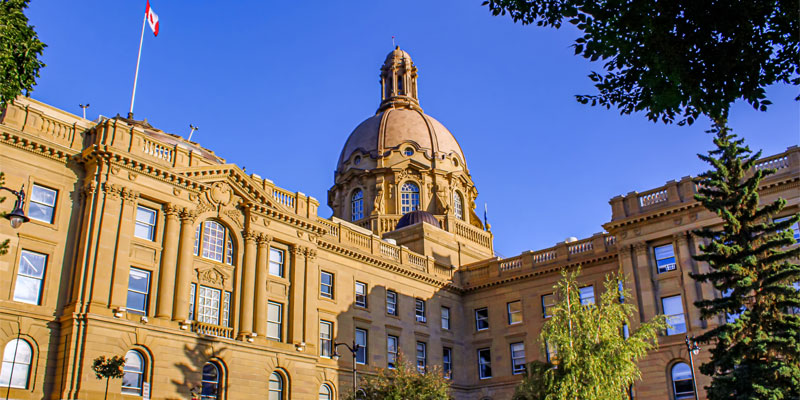Alberta government should use unexpected windfall to stop resource rollercoaster

According to the province’s recent fiscal update, Alberta’s budget deficit will fall from a projected $18.2 billion to $7.8 billion in 2021/22, mainly due to an unexpected windfall of resource revenue. While this will provide some temporary fiscal relief, the Kenney government should resist the temptation to use the increased resource revenues—which are volatile by nature—to solve the immediate deficit problem and instead capitalize on this opportunity to finally get off the resource revenue rollercoaster. To do so, the government should reach back in Alberta history, and learn lessons from Alaska, by re-establishing the Alberta Sustainability Fund and eventually renewing the Heritage Fund.
For too long, successive Alberta governments have spent most or all resource revenue as it came in the door, creating a boom/bust cycle in provincial finances where governments increased spending to unsustainable levels during boom times and then inevitably suffered deficits when commodity prices declined.
Consider, Alberta’s per-person government program spending (adjusted for inflation, excluding interest costs) increased from $8,012 in 1999/00, the start of a resource boom, to $12,740 by 2008/09—a 59 per cent increase. When resource revenue declined, the province incurred deficits, which persist today. This cycle has repeated over time.
Re-establishing the Alberta Sustainability Fund (ASF) could help get Alberta off this resource revenue rollercoaster. Originally introduced in 2003, the ASF set an amount of resource revenue ($3.5 billion) that could be spent annually. When resource revenues were above that amount, the excess was saved to be used when resource revenues fell below that amount. The idea was simple; save during the good times to finance a stable amount of resource revenue for the budget during the bad times.
Unfortunately, like is so often the case with fiscal rules, the government of the day eliminated the fund after the province’s finances faltered and Edmonton needed more revenue. In other words, instead of reducing spending to counter the effects of lower resource revenue, the government reverted to including all resource revenue in the budget. The government eventually eliminated the fund in 2013.
By limiting (and stabilizing) the amount of resource revenue included in the budget, the ASF helps restore discipline to government spending and prevent the resource-driven boom/bust cycle in government finances. This time, the government should establish the fund as a “constitutional rule” (as has been used to successfully grow Alaska’s resource revenue savings fund), making it more difficult for future governments to change.
As the province’s finances stabilize (i.e. the budget is balanced), the Alberta government should also constitutionally require that a share of resource revenue be contributed to the Heritage Fund. While the Heritage Fund has largely been neglected for decades, restoring regular contributions to the fund would temper the pressure for governments to increase spending during good times. Moreover, it would turn a portion of Alberta’s onetime resource revenues into a financial asset that can provide a stable stream of income over time.
A windfall in resource revenue is great news for Albertans. But to avoid another ride on the resource revenue rollercoaster, the Kenney government should save a share of resource revenue in a Sustainability Fund and eventually renew the Heritage Fund.


